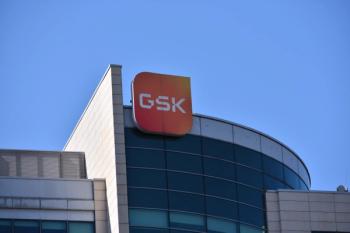
- BioPharm International-08-01-2019
- Volume 32
- Issue 8
De-risking Biologics Development Through Advanced Mass Spectrometry Approaches
Using advanced HDX-MS and native MS techniques can improve the identification of potentially successful biologic drugs and de-risk CMC and clinical designs.
The overall success of moving drugs from Phase I clinical trials to approval is approximately 10% (1), indicating an enormous opportunity to improve approaches to the development of biologic drugs and more effectively achieve intended clinical outcomes. Advanced analytical assessment of molecular attributes has been demonstrated to enhance the likelihood of success of biologic drugs in clinical development, which has become more important as an increasing proportion of the therapeutics pipeline is made up of biologic drugs. This article discusses how the use of hybrid mass spectrometry (MS) approaches can inform and de-risk decisions to help enable success of biologic development programs (2).
Biologics are large, complex molecules produced in living cells. Therapeutics on the market and in development include monoclonal antibodies (mAbs) and related analogs, recombinant human proteins, enzyme-Âreplacement Âtherapies, fusion proteins, antibody-drug conjugates, bispecific drugs, and a wide array of gene and cell therapy approaches.
The biologic therapeutics class also represents an economically important sector. The total global biologics market was worth $255 billion in 2017 (3) and is projected to grow to between $400 billion and $581 billion by 2025/2026 (3,4). North America alone is predicted to have a revenue share of the market of more than 40% by the end of 2024 (5). The biopharmaceutical industry’s investment is growing. In 1980, US members of Pharmaceutical Research and Manufacturers of America (PhRMA) spent $2 billion on biopharma R&D. By 2015, this amount had risen to an estimated $58.8 billion (5).
Biologic drugs offer unprecedented innovation, rapid growth, and major opportunities, both for biopharma companies and for patients, but their successful development can be challenging. Even with the greater knowledge and process improvements put in place since the 1980s, more than 90% of all drug candidates fail between Phase I and approval (1), and over half will fail in Phase III (6). According to an FDA report, there were more than 6300 biopharmaceuticals in clinical development globally in August 2016 (7). This has increased from 5400 products in December 2011. Of the products in clinical trials, 2660 were in Phase II and only 932 in Phase III, confirming the high rate of attrition (7).
Biologics are costly to manufacture at clinical and commercial scale, and the smallest changes in manufacturing processes can have an impact on drug safety and efficacy. Approaches that inform on critical quality attributes, critical process parameters, and correlations with clinical outcomes can reduce the failure rate and could help to speed drugs through development and ultimately reduce the enormous aggregate costs of drug development.
Better knowledge makes for better drug development
Understanding a candidate drug and how it interacts with the target across a number of clinically relevant doses improves the chances of a successful transition from preclinical to clinical development. Acquiring as much information as possible at an early stage will help researchers to select the best candidate and corresponding dose, inform the chemistry, manufacturing, and controls (CMC) program, and design better clinical trials. Key steps include defining the binding site profile and target site Âengagement as well as further understanding the drug’s mechanism of action (MoA).
How the candidate drug interacts and engages with its target play a major role in its efficacy and are important markers of success. By creating an accurate profile and gaining a better understanding of the interaction between drug and target, researchers can select the best candidates and further optimize their safety and efficacy. By using the right analytical approaches, researchers can generate insights into drug candidates’ molecular and chemical attributes and further develop correlations between these attributes and biological function and/or clinical outcomes, which will further improve candidate selection and optimization.
Gaining a better understanding
Analytical technology is progressing fast, providing researchers with more and better tools to understand biologic drug-target interactions and mechanism of action. There is a wide variety of high-throughput low-resolution methods used to detect the binding between molecules and establish the binding affinities, including the following:
- Surface plasmon resonance (SPR)
- Biolayer interferometry (BLI)
- Analytical ultracentrifugation (AUC)
- Light scattering techniques
- Isothermal titration calorimetry (ITC)
- Size-exclusion chromatography (SEC).
These techniques all allow rapid data collection; however, interpreting the results and applying them to strategic decisions about drug candidate selection can be challenging, if not confounding in many cases. All of these approaches require the analysts to make assumptions while interpreting the data, which can result in variations in the results. For example, calculating the size of biologics using AUC and SEC requires an assumption of the shape of the molecule. If this assumption is incorrect, the size and therefore the stoichiometry may be incorrect. Complexes, which include a number of different components, can further affect the data analysis.
Detailed molecular characterization methods using high-resolution Âstructure tools give researchers access to much greater detail about the interaction between biologic drug candidates and their target sites, right down to the level of the residues and regions directly involved in binding or affected by the binding process. These also provide a better understanding of the impact of components within complexes, and how these can affect the mechanism of action, and the eventual outcomes in vivo and in clinical trials. This level of characterization is further important in CMC to make better predictions of the stability of the biologic molecules as they move from drug discovery to drug development, allowing researchers to make go/no-go decisions or continue the optimization process. Detailed characterization also allows assessment of the quality of in-process materials at every step. At the clinical stage, high-resolution techniques are important to support the scale-up/out process and to ensure that the drug product meets the same specifications when it is produced in larger batches and/or reproduced in different facilities.
The disadvantage of high-resolution methods is that they take longer and require greater resources than low-resolution techniques.
The benefits and applications of MS
MS can be used to assess a wide range of biologic species, across a breadth of properties (see Table I). These may be homogenous samples or individual components in heterogenous or complex mixtures. MS is usually performed at peptide-level resolution, but the resolution can be made even higher by using tandem MS (MS/MS) or multidimensional MS (MSn) to further probe specific features of individual peptides. While this process takes longer and uses more resources, it does provide more detailed information on complex systems, including those that are not amenable to detection using X-ray crystallography or NMR.
The benefits of mass spectrometry approaches include:
- Assessing potential competing effects that diminish efficacy
- Greater certainty of identifying engagement sites correctly
- Showing how multiple target-drug interactions relate to function/MoA. For example, characterizing valency and binding for mAbs/bispecifics
- Elucidating interactions between drugs and the immune system
- Understanding the impact of glycosylation or other modifications on biologic drug stability as part of the CMC decision-making processâ©
- Identifying changes in the biologic drug in different conditions, in complexes, and comparability before/after scale-up to support CMC decisions
- Analyzing synergy and compatibility among therapeutics to aid candidate selection, development, and CMC decisions to support personalized medicine.
The two key MS approaches for characterizing binding and MoA are hydrogen deuterium exchange (HDX) MS and native MS (see Table II).
HDX-MS measures the rate of exchange of protons between labile amides and aqueous solution. This analysis approach can map binding site interactions, including epitopes on antigens, paratopes on antibodies, protein-protein/ligand interfaces, and self-association as well as identify conformational changes induced by binding.
Native MS is a gentler technique that determines the size of intact macromolecules, proteins, and complexes while still in their folded state as well as aggregated species. The technique has been used successfully to analyze multi-protein assemblies, viral capsids, and mAb-antigen and protein-small molecule complexes. Data from native MS analysis can confirm the stoichiometry of subunits in heterogeneous complexes, and further MS analyses can help to verify the individual components in detected complexes. An example of this is the determination of the relative levels of correctly paired heteromeric bispecific chains and incorrectly paired homomeric species in the production of a bispecific antibody candidate. An important example application is determination of the level of homotypic anti-CD3 pairings in a bispecific product for assessing potential risk of immune reactions caused by CD3 cross-linking.
HDX- and native MS can both play an important role in strategy and decision-making in drug development and CMC. By mapping interactions between antibodies and antigens, HDX-MS can help researchers re-engineer proteins to optimize their safety, efficacy, stability, and ability to be manufactured. This could include identifying antidrug antibody binding epitopes on therapeutic proteins, showing where proteins change shape upon binding, or highlighting hot spots for aggregation.
Native MS techniques can be used to characterize stoichiometry of non-covalent complexes. By combining this with HDX-MS, researchers can understand more about target engagement and therefore improve candidate selection and optimization, thereby de-risking the development of biologic drugs.
Combining the approaches
While individual approaches can provide a lot of useful data, using a combination of techniques has additional benefits. For example, data from low-resolution approaches can be interpreted much more accurately in the context of high-resolution data. There are significant opportunities offered by using combined HDX-MS and native MS approaches to interpret accurately low-resolution data from high-throughput methods. This allows researchers opportunity to improve development from candidate selection through to manufacturing approaches.
Conclusion
Strategic application of advanced HDX-MS and native MS techniques, alone and in combination with each other and with other analysis approaches, can improve the identification of potentially successful biologic drugs and de-risking CMC and Âclinical designs earlier. Detailed assessment of target engagement using these techniques may provide useful guidance for better decision-making in biologic development Âprograms.
References
1. D.W. Thomas, et al.,
, 2016.
2. JS Chadwick, K Poss, S-L Wu,
3. Research and Markets,
4. Grand View Research,
5. PhRMA,
, April 2016.
6. A. Grignolo, S. Pretorius, “
7. G.Long, The Biopharmaceutical Pipeline: Innovative Therapies in Clinical Development,
Article Details
BioPharm International
Vol. 32, No. 3
August 2019
Pages: 42-45
Citation
When referring to this article, please cite it as J. Chadwick, De-risking Biologics Development Through Advanced Mass Spectroscopy Approaches," BioPharm International 32 (8) 2019.
Articles in this issue
over 6 years ago
Monitoring and Control of Inline Dilution Processesover 6 years ago
FDA Maps Strategies to Advance Cell and Gene Therapiesover 6 years ago
Gene-Editing Techniques Target New Applicationsover 6 years ago
The Moon, the Stars, and the Science Labover 6 years ago
Quality Risk Management Plans Create Effective Quality Systemsover 6 years ago
Best Practices in the QC Micro Laboratoryover 6 years ago
Enhancing Cell Harvestover 6 years ago
The Case for Stainless Steelover 6 years ago
Orchestrating Success in Clinical Trial Manufacturingover 6 years ago
Industrializing Cell and Gene TherapiesNewsletter
Stay at the forefront of biopharmaceutical innovation—subscribe to BioPharm International for expert insights on drug development, manufacturing, compliance, and more.





